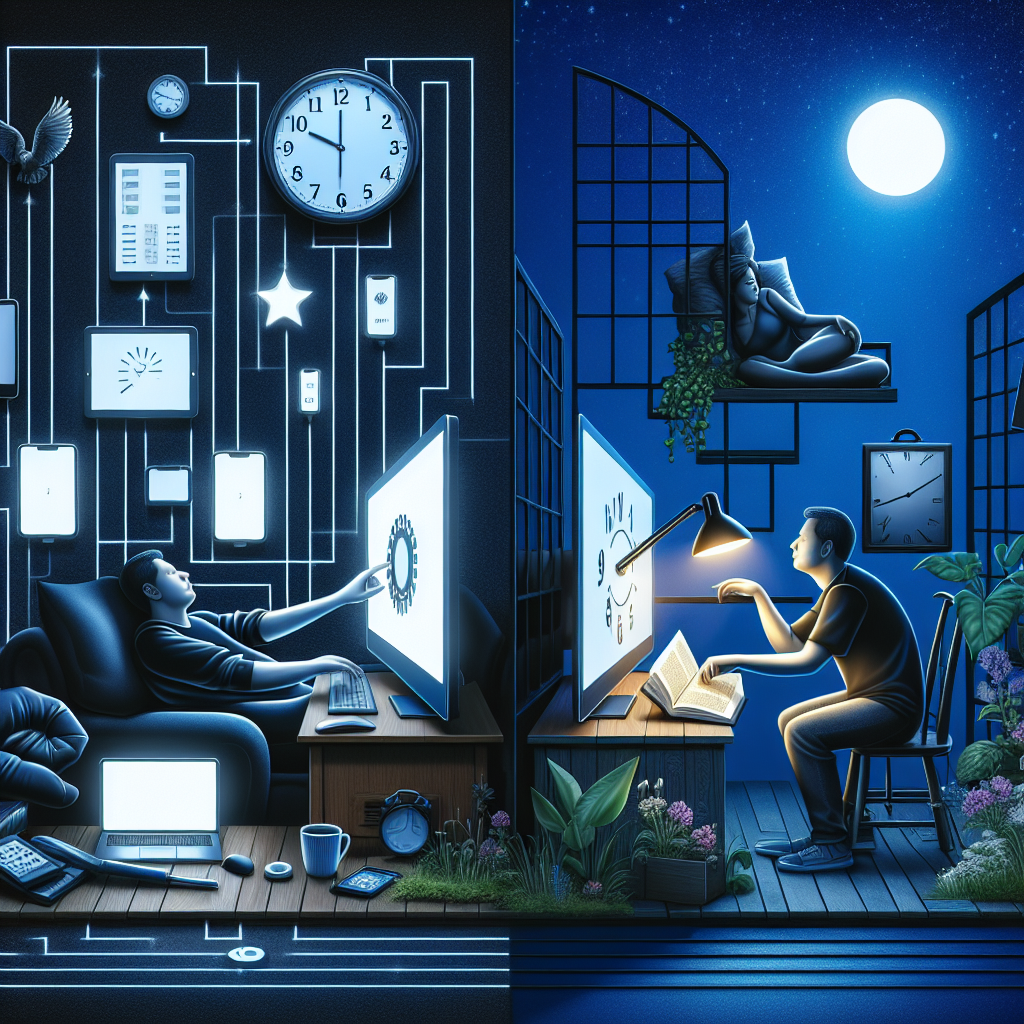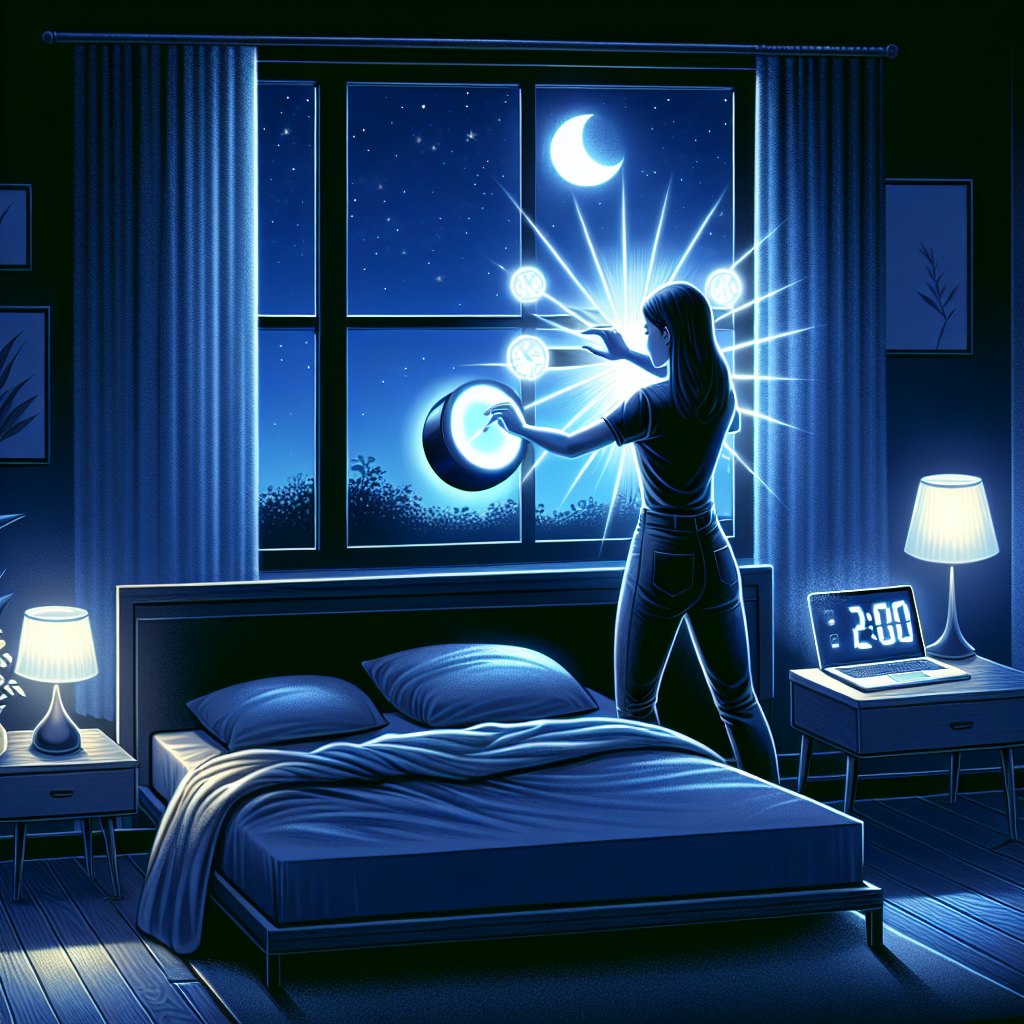Reclaiming Your Circadian Rhythm in a Digital World

Take control of your health and wellbeing by reclaiming your circadian rhythm in this digital world. Learn more and start your journey today by visiting My Vibrant Vitality.
Understanding and Reclaiming Your Circadian Rhythm in a Digital Age
In the digital age, our lives are increasingly dominated by screens. From smartphones to laptops, tablets to televisions, our eyes are constantly bombarded with artificial light. This constant exposure to digital screens, particularly in the evening hours, can disrupt our circadian rhythm, the internal biological clock that regulates our sleep-wake cycle. Understanding and reclaiming your circadian rhythm in this digital age is crucial for maintaining optimal health and well-being.
The circadian rhythm, derived from the Latin words “circa” meaning “around” and “diem” meaning “day,” is a 24-hour internal clock that runs in the background of your brain and cycles between sleepiness and alertness at regular intervals. It’s also known as your sleep/wake cycle. A part of your hypothalamus (a section of your brain) controls your circadian rhythm. However, outside factors like lightness and darkness can also impact it. When it’s dark at night, your eyes send a signal to the hypothalamus that it’s time to feel tired. Your brain, in turn, sends a signal to your body to release melatonin, which makes your body tired. That’s why your circadian rhythm tends to coincide with the cycle of daytime and nighttime.
However, the advent of artificial light, particularly the blue light emitted by digital screens, has the potential to disrupt this natural cycle. Exposure to light during the evening, especially blue light, tricks our brains into thinking it’s still daytime, delaying the release of melatonin and making it harder to fall asleep and wake up in the morning. Over time, this can lead to a range of health problems, from insomnia and fatigue to obesity and depression.
Reclaiming your circadian rhythm in a digital world is not an easy task, but it’s not impossible either. The first step is to limit your exposure to screens in the evening. Try to turn off all digital devices at least an hour before bed to give your brain time to wind down and prepare for sleep. If you must use a screen, consider using a blue light filter or wearing blue light blocking glasses to minimize the impact on your sleep/wake cycle.
In addition to limiting screen time, maintaining a regular sleep schedule can also help to regulate your circadian rhythm. Going to bed and waking up at the same time each day, even on weekends, can help to reinforce your body’s sleep/wake cycle and make it easier to fall asleep and wake up.
Finally, exposure to natural light during the day can also help to regulate your circadian rhythm. Try to spend time outside in natural light each day, particularly in the morning. If this isn’t possible, consider using a light therapy box to simulate natural light.
In conclusion, while the digital age has brought many conveniences, it has also disrupted our natural sleep/wake cycles. By understanding the impact of artificial light on our circadian rhythm and taking steps to limit our exposure, we can reclaim our sleep/wake cycle and improve our overall health and well-being. It’s time to take back control of our sleep in this digital age.
The Impact of Digital Devices on Your Circadian Rhythm: Solutions and Strategies

In the digital age, our lives are increasingly dominated by screens. From smartphones to laptops, tablets to televisions, digital devices have become an integral part of our daily routines. However, this constant exposure to digital screens can have a profound impact on our circadian rhythm, the natural internal process that regulates the sleep-wake cycle.
The circadian rhythm is a biological clock that governs our sleep patterns, metabolism, and other physiological processes. It is primarily influenced by light and darkness in our environment. The advent of artificial light has already disrupted our circadian rhythms, but the blue light emitted by digital screens is particularly problematic. This light can trick our brains into thinking it’s daytime, even when it’s not, leading to difficulty falling asleep, poor sleep quality, and daytime fatigue.
Fortunately, there are several strategies we can employ to mitigate the impact of digital devices on our circadian rhythm. One of the most effective is to limit exposure to screens in the evening. The National Sleep Foundation recommends turning off all digital devices at least an hour before bedtime. This allows the brain to wind down and prepare for sleep. If this is not feasible, consider using a blue light filter on your devices or wearing blue light blocking glasses.
Another strategy is to establish a regular sleep schedule. Going to bed and waking up at the same time each day can help regulate your circadian rhythm. This consistency signals to your body when it’s time to sleep and wake up, making it easier to fall asleep at night and wake up in the morning.
In addition to these strategies, it’s also important to create a sleep-friendly environment. This means keeping your bedroom dark, quiet, and cool. Consider using blackout curtains or an eye mask to block out light, and a white noise machine or earplugs to drown out noise. The temperature of your room can also affect your sleep. The National Sleep Foundation suggests a bedroom temperature of around 65 degrees Fahrenheit for optimal sleep.
Regular physical activity can also help regulate your circadian rhythm. Exercise has been shown to improve sleep quality and increase the amount of time spent in the deep, restorative stages of sleep. However, it’s important to time your workouts correctly. Exercising too close to bedtime can actually interfere with your sleep, as it increases your body temperature and stimulates hormones that promote wakefulness.
Lastly, consider your diet. Certain foods and drinks can interfere with your sleep. Caffeine and alcohol, for example, can disrupt your sleep patterns and should be avoided close to bedtime. On the other hand, foods rich in tryptophan, magnesium, and melatonin can promote sleep. These include turkey, almonds, and cherries, respectively.
In conclusion, while digital devices have become a ubiquitous part of our lives, their impact on our circadian rhythm cannot be ignored. By implementing these strategies, we can mitigate this impact and reclaim our natural sleep-wake cycle. It may require some adjustments to our routines and habits, but the benefits to our sleep and overall health are well worth the effort.
Harnessing Technology to Restore Your Natural Circadian Rhythm
In the modern digital world, our natural circadian rhythms are often disrupted by the constant exposure to artificial light from screens and other electronic devices. This disruption can lead to a host of health issues, including sleep disorders, depression, obesity, and even certain types of cancer. However, it’s not all doom and gloom. With a little bit of knowledge and effort, we can harness the power of technology to restore our natural circadian rhythms and improve our overall health and well-being.
The circadian rhythm, also known as your body’s internal clock, is a natural, internal system that regulates the sleep-wake cycle and repeats roughly every 24 hours. It can be affected by environmental cues, like sunlight and temperature. When our circadian rhythms are in sync with the natural world, we feel alert during the day and sleepy at night. However, the advent of artificial light, particularly the blue light emitted by screens, has thrown many people’s circadian rhythms out of whack.
Blue light is particularly disruptive because it suppresses the production of melatonin, a hormone that signals to our bodies that it’s time to sleep. This is why staring at a screen before bed can make it harder to fall asleep. However, technology isn’t just the problem; it can also be part of the solution. Many electronic devices now come with settings or apps that reduce the amount of blue light they emit. For example, ‘Night Shift’ on Apple devices and ‘Night Light’ on Windows 10 shift the color of your display to the warmer end of the spectrum during the evening hours, reducing your exposure to blue light.
In addition to adjusting your screen settings, there are other ways to use technology to help reset your circadian rhythm. One method is to use a light therapy lamp, which mimics outdoor light and can help regulate your body’s natural sleep and wake cycles. These lamps can be particularly useful during the winter months when natural light is scarce.
Another tool that can be beneficial is a sleep tracker. These devices, which can be worn on the wrist or placed on the bed, monitor your sleep patterns and provide data on the quality and quantity of your sleep. This information can be invaluable in helping you understand your sleep habits and make necessary adjustments. Some sleep trackers even come with features that wake you up during your lightest sleep phase, making it easier to get up in the morning.
Lastly, there are numerous apps available that can guide you through relaxation techniques and mindfulness exercises to help prepare your body for sleep. These apps can be particularly useful for those who struggle with insomnia or anxiety.
In conclusion, while the digital world has certainly disrupted our natural circadian rhythms, it also provides us with the tools to restore them. By being mindful of our screen time, taking advantage of blue light filters, using light therapy lamps, tracking our sleep, and utilizing relaxation apps, we can harness the power of technology to improve our sleep and overall health. It’s a matter of using technology wisely and making it work for us, rather than against us.